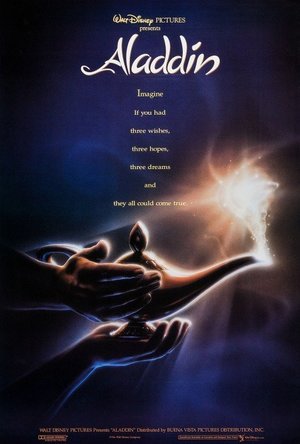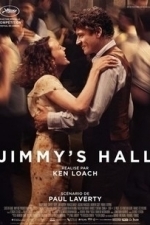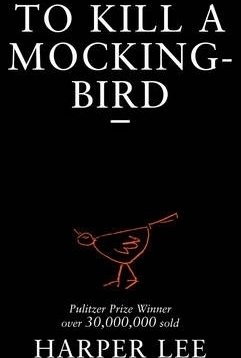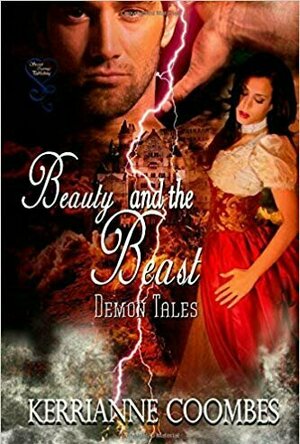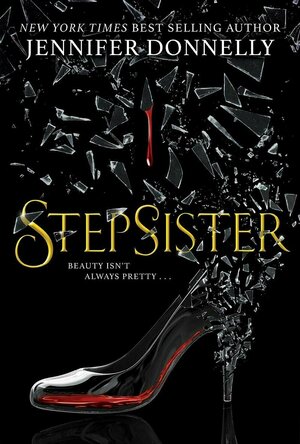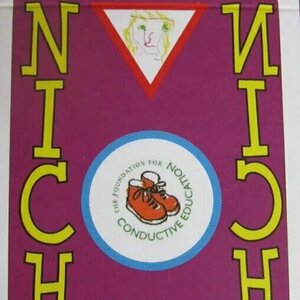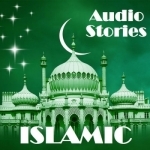
All Islamic Audio Stories Muslims Free
Book and Lifestyle
App
Get the largest collection of free All Islamic audio stories Muslims for your phone or tablet. Read...

Baby Monitor Duo (VoIP)
Lifestyle and Health & Fitness
App
Now with live video streaming! All you need are TWO iOS-devices – iPhone / iPad / iPad Touch –...
Super Self-Confidence Hypnosis Subliminal Affirmation HD Video App by Glenn Harrold
Lifestyle and Health & Fitness
App
This superb high quality subliminal hypnosis video by best selling hypnotherapist Glenn Harrold,...
Darren (1599 KP) rated Aladdin (1992) in Movies
Jun 20, 2019
After Jasmine runs away she meets Aladdin who gets placed into helping Jafar retrieve the Lamp from the Cave of Wonders. Once Aladdin finds the lamp he awakens the Genie who grants him three wishes that could change his life forever.
Aladdin is one of the most popular Disney movies all time and I can see why. We have the unlikely hero that is good at heart but never given the chance to be the success he could be, we have a strong female lead and a villain tired of being in the shadows wanting power. Mixing all of these together we get a full story that does everything you need in a film taking the Disney Princess idea to a new world. This will always be considered a true classic that will forever be loved.
Character Review
Aladdin: Aladdin is the small town street thieve that does what he needs to, to survive. When he meets Jasmine he instantly falls in love but finds him the target of Jafar to steal a magic lamp. The lamp gives him three wishes that he uses to make himself a Prince to marry Jasmine but it isn’t long before his true self is discovered and he can become a hero by himself. Aladdin is a great character that shows just because he does criminal activities he is doing them for the right reason and is selfless at heart.
Genie: Genie comes from the lamp giving Aladdin three wishes having been trapped for years. He has rules but must grant wishes that don’t break these rules to his master. He loves working for Aladdin but ends up being forced into working for Jafar. Genie is one of Robin William best performance as the pure energy behind this film that you want to see every single scene he is in.
Jasmine: Jasmine is the princess that is being forced into marrying a prince but she keeps rejecting any that come her way. She escapes the kingdom and falls in love with Aladdin who is everything she shouldn’t be marrying. Jasmine is a strong princess which is unlike most of Disney’s for the time she wants love and will make sure she finds it.
Jafar: Jafar is the Sultan’s most trusted advisor but he has plans to become the Sultan himself and will look into to any means to make this happen including finding the lamp to wish for the power. Jafar is one of your typical villains you see in a Disney film that will always be one to hate.
Support Characters: Aladdin has good supporting comedy character that will make you laugh through the film.
Director Review: Ron Clements, John Musker – The pair give us one of the most memorable and stand out Disney films of all time.
Adventure: Aladdin takes us on an adventure as Aladdin goes from street thieve to worthy hand in marriage for Jasmine.
Animation: Aladdin had the brilliant animation you have come to know from Disney.
Comedy: Aladdin has great use of comedy with most coming from Robin Williams.
Family: Aladdin is one the whole family could enjoy with jokes for the whole family to understand.
Fantasy: Aladdin puts us in the middle of a fantasy world that is filled with genies that can grant wishes.
Romance: Aladdin has a romantic story that follows a princess who wants to fall in love rather than be forced into marriage.
Settings: Aladdin puts us into a world that shows the type of world that Aladdin is living in.
Suggestion: Aladdin is one that I think everyone should have watched at least once. (Watch)
Best Part: Whole New World.
Worst Part: Not one.
Believability: No
Chances of Tears:
Chances of Sequel: Has one.
Post Credits Scene: No
Oscar Chances: Won 2 Oscars
Budget: $28 Million
Runtime: 1 Hour 30 Minutes
Tagline: A diamond in the rough.
Trivia: This film became the 14th (and the first animated movie) to gross more than $200,000,000.
Overall: One of the BEST Disney films of all time.
https://moviesreview101.com/2016/07/06/aladdin-1992/

Locator365 – Remote Mobile Tracking, Routing Record. Prevent Missing Persons
Navigation and Productivity
App
【Video Demo】 http://www.youtube.com/watch?v=D7Hz3EKnQiA 【AppPicker.com Review*****】 - If...
Gareth von Kallenbach (980 KP) rated Jimmy's Hall (2015) in Movies
Aug 6, 2019
The few that do come along almost certainly rate high on the scale of exceptional movies that one would want to see. I myself can’t remember a ‘bad’ Irish film. Perhaps one of the reasons for that is the fact that this country has a solid history of countless Irish immigrants coming here and helping to build the foundations for America. Well, today’s film for your consideration doesn’t go back THAT far. It doesn’t even take place in America. However, the history of Irish immigrants (specifically one immigrant) does play a role. Only it involves an Irish immigrant how came to America and then several years later returned to Ireland only to be forcibly deported back to America. I know I know. That explanation makes it sound like a comedy and although the film has many lighthearted moments, I can assure you it’s NOT a comedy. In fact, it deals with an influential figure in one of the more politically turbulent periods in Ireland’s history just before the beginning of the Second World War.
‘Jimmy’s Hall’ is a 2014 Irish-British drama directed by English television and film director Kenneth ‘Ken’ Loach. The film focuses on the events leading up to the deportation from Ireland of Jimmy Gralton, who led a precursor to Ireland’s communist party in the county Leitrim.
Starring Barry Ward, Simone Kirby, and Irish character actor Jim Norton, the film opens in 1932. Jimmy (Ward) has just returned to his home to help his mother tend the family farm after spending 10 years in the United States in the midst of the Great Depression coinciding with the establishment of a new government in the aftermath of the Civil War between pro-British and anti-British forces.
Reluctant to anger his old enemies, the church and the landowners who forced him to leave Ireland, but eager to meet the needs of the people of Leitrim, Jimmy (Ward) decides to reopen the ‘Hall’, a center for young people where they can meet to study, talk, dance, play music, learn to read, debate issues of the day. Free to all and open to anyone who wishes to learn while respecting the views and opinions of others, the ‘Hall’ is an immediate success. Not everyone is pleased to see Jimmy resuming his old activities. In particular the church and local priest (Norton) who see Gralton as not only a ‘bad influence’, but also as a follower of Stalin who as history knows sent countless millions (including religious leaders) to their deaths.
Despite the complaints and at times violent reactions on the part of the supporters of the church and the landowners, Gralton tries desperately to make them realize he has absolutely no connection to Stalin and has no desire to bring down the church. Only to better the situation for everyone. Jimmy even invites the local priest to take a leadership role in the Hall’s committee. In the end though, the fears of the church and the state go unchanged. Jimmy is a communist and although he has no connection Stalin the church and the government see them as one in the same. The police take Jimmy into custody at his family’s farm and forcibly deport him back to America even so much as denying him on last chance to see his ailing mother.
In education systems there are books and films which are considered ‘required reading’ or in this case ‘required viewing’. This film should be required viewing. It is not just an excellent film about a historical Irish political figure or as I mentioned earlier a film about a turbulent point in Irish history. It’s an example of the greater ‘world conflict’ between what became the western bloc and the eastern bloc. Both sides in that grater conflict saw each other the same way the two sides in the Irish countryside of the 1930s saw each other. The ones that meant well and only wanted to better the situation for everyone including themselves inspired fear in those who had power and those who had the power inspired fear in those who meant well. This movie showed that not all political figures are evil … nor are all religious figures. It’s the individual or several individuals within those groups that are reluctant to change.
I would highly recommend this film. Regardless of the content it’s an excellent film. If this film is as good as most films made in Ireland, they definitely need to start exporting them on a grander scale. I’d give this film 4 out of 5 stars.
This is your friendly neighborhood photographer ‘The CameraMan’ and on behalf of my fellows at ‘Skewed & Reviewed’ I’d like to say thanks for reading and we’ll see you at the movies
Kayleigh (12 KP) rated To Kill a Mockingbird in Books
Jan 2, 2019
The story is set in Maycomb, Alabama in the 1930s, and is written from the perspective of Jean Louise ‘Scout’ Finch, who is between six and eight years old as the story progresses. The start of the book does an effective job of introducing us to all the characters. Scout lives with her widowed father, Atticus, a lawyer, her brother Jem (who is 4 years older than her) and Calpurnia, a black woman who acts as a type of mother figure. A friend, Dill, also joins them in the summer. The three children are intrigued by Arthur ‘Boo’ Radley, who lives in the house on the corner but is never seen outside. I really enjoyed this part of the story; it set the scene brilliantly, as well as helping me reminisce about my own childhood. Even if there is no ‘haunted’ house, children will always make one – at least, my brother and I did! With the limitless amounts of imagination children have, there will always be adventures to be had and ‘monsters’ to escape from. There was one particular house, when we were around the same age as Jem and Scout, where they had a doorbell you pulled, like a cord. My brother Josh said it was a doorbell that made you scream every time you pulled it, so we obviously had great fun in pulling it, screaming, and running away. If by some fluke the person living there is reading this, I’m really sorry, but it still makes me laugh! There was also every Christmas, when we went carol singing. We had decided that the houses beyond the wood were richer than the others, and every year would link arms, lighting matches to try and find our way in the dark and telling ghost stories the whole time.
Once everything has been established, the book moves on to a case Atticus is defending. A black man, Tom, has been accused of raping Mayella Ewell, part of a trashy white family with very poor education and even less money. This is where the casual prejudice of the time is evident – Jem and Scout have to put up with people calling their family a “nigger-lover” (sorry if that language offends, it is a direct quote and I mean no harm); Atticus faces repercussions for his whole-hearted attempt to save Tom; and many of the Maycomb women look down on the black community. However, there’s still a touch of hope – the way Atticus defends Tom’s case makes everybody think, a great feat in the setting where black and white people are in completely different classes. In this part of the story, I really looked up to Atticus, in his seemingly-infinite wisdom.
In the final part of the story, Jem and Scout finally get to meet Boo Radley, and it is here that the title of the book becomes apparent. In the middle of the book, after Jem and Scout get air-rifles, it is said:
<blockquote>When he gave us our air-rifles Atticus wouldn’t teach us to shoot. Uncle Jack instructed us in the rudiments thereof; he said Atticus wasn’t interested in guns. Atticus said to Jem one day, “I’d rather you shoot at tin cans in the back yard, but I know you’ll go after birds. Shoot all the bluejays you want, if you can hit ‘em, but remember it’s a sin to kill a mockingbird.”
That was the only time I ever heard Atticus say it was a sin to do something, and I asked Miss Maudie about it.
“Your father’s right,” she said. “Mockingbirds don’t do one thing but make music for us to enjoy. They don’t eat up people’s gardens, don’t nest in corncribs, they don’t do one thing but sing their hearts out for us. That’s why it’s a sin to kill a mockingbird.”</blockquote>
Obviously, not knowing what was coming, I thought the story must eventually be about the children shooting a mockingbird. The last page of the book, though, I realised that it was a lot more subtle and symbolic than that. The mockingjay is Boo Radley, the man who gives when he can and causes no harm.
I really wish I’d read this story as a child, to see what sort of perspective I’d have had back then. Reading as an adult means that, while Scout was a brilliant perspective, I was almost reading as an outsider. I could see her maturing, slowly fitting the pieces together to start acting like an adult, but at the same time it was an undeniably adult reading. I really really enjoyed the book, but I have a feeling it’s one of those multi-faceted ones where you read something different every time. I can’t help thinking that reading it as a child would have been a lot more powerful.
This review is also on my <a href="http://awowords.wordpress.com">blog</a>; - if you liked it, please check it out!
Kara Skinner (332 KP) rated Beauty and The Beast in Books
Sep 10, 2019
I’m a huge sucker for Beauty and Beast stories, as you probably know if you’ve read some of my other reviews. Seriously. You can win some girls over with chocolate and others over with hugs and kisses, but nothing does it for me like an insecure love interest and a woman who’s his salvation because of her unconditional love. (Okay, maybe I’m a little high maintenance). So of course I loved this story! Brigg was wonderfully sweet and conflicted, even though he needs to stop listening to his idiot brother. Cally is a fantastic damsel in distress even though sometimes she just needs to think of the obvious and frickin’ tell someone she doesn’t want to go back home because her mother’s a bitch and she’s part demon. But you know, aside from that, the characters are great.
It’s totally understandable why Brigg dislikes humans. I mean, the only real exposure he had of them was from Cally’s mom, who cursed him and his brother to be hairy beasts instead of the handsome, practically human-looking demons they really were. Frankly, I’d be pissed too. I also understand his confusion when he falls himself falling for Cally when he thinks she’s completely human, and the daughter of a crazy witch/queen to boot. Nevertheless, he still protects her. He saves her from slavery, risking the wrath of her kidnapper to do it, and he keeps her safe. He does this even though he doesn’t think she could ever love him in return.
She was a vision, an image plucked right from his dreams. Maybe a time– before the curse– he had imagined such a beauty being his…. But he was no longer that young Rain demon, that young demon with smooth skin and a face as human as hers. He was a beast, an ugly monster who didn’t deserve the look of interest Cally was flashing right now.
What can I say? I love the insecurities. They are as sexy as hell when done right.
But even though his intentions are good, Brigg is not the smartest demon in the hellhole. As soon as his brother Torc enters the scene, it takes Brigg all of two minutes to decide that Cally has placed a spell on him to use him to get home. This would make sense, except by this point both Brigg and Cally were safe. In a palace. As the guests of a prince. Who was giving her a lift home. She would need to continue on with the spell and the act because…. ?
Like I said, not that fast of a thinker. But Cally isn’t much better. More than anything she wants to avoid her old home, with her abusive mother who was going to put her into an arranged marriage which would only end badly for Cally. Now she’s in an impenetrable palace that’s owned by Sam, who has been nothing but kind to her. He thinks he’s still being kind when he arranges for her ride home. And Cally doesn’t bother to tell him she doesn’t want to go home! Clearly, she’s just being melodramatic. She’s not that desperate.
She had thought about telling Sam, considered asking for his help, but she had been such a burden since Brigg rescued her, Call was frightened of rejection.
You think Sam’s rejection is going to be worse than having your horns filed off again before getting married to a prince that will likely torture you for the rest of your life when he finds out you’re a demon. Clearly, you don’t have your priorities straight.
But seriously, I loved the characters! I’m telling you, it’s Beauty and the Beast! My standards might be a tad low with this story arc.
There was a lot of confusing things in the plot as well. Like what era does this take place in? Cally rides home in a carriage and Brigg and Torc use swords. But Cally also wears t-shirts and jeans and she uses an electric torch, aka flashlight. It’s difficult enough to learn all of the nooks and crannies of the world the author built. There shouldn’t be confusion like flashlights with swords as well. Also, I felt like there was a lot of potential for a longer, more developed story. The whole thing felt very short to me. We never find out why Brigg’s father got cursed to begin with, and I’d love to know more about Brigg’s past, like how did he go crazy and get everyone to be afraid of him? That was never explained. Also, I know it’s unlikely, but I really wished there was some confirmation that Brigg and Cally are not brother and sister. After all, we know Cally’s mom has a past with Brigg’s father, Cally’s own father is MIA, and her horns are the same color as Brigg’s. Probably not anything, but just enough to make me wonder.
I don’t know. I liked this story enough to read it twice– that’s a huge compliment from me– but after reading it a second time and writing this review I’m wondering how good it really was. Maybe I just read it at the right time but didn’t like it as much. I don’t know. So three out of five stars on this one?
Lottie disney bookworm (1056 KP) rated Stepsister in Books
Aug 16, 2019
Judging purely by the title of the book: the cynical side of me expected this to be a retelling of the traditional fairy tale from the viewpoint of the “ugly stepsisters”. Perhaps with a remorseful twist and a concluding reconciliation. I could not have been more wrong.
This is possibly the first time I should have judged a book by its cover: the iconic glass slipper casting fragmented shards across the jacket should have certainly forewarned me that this will not be just another Cinderella story.
Unlike the twisted tales and the villain series, Step Sister is, as far as I know, not connected to the Disney enterprise at all. This makes it an edgier read by far but also allows the novel to lean as far away from the traditional fairy tale as it dares: smashing just a couple of stereotypes along the way.
Oh, and just a quick point: the novel opens on Isabelle and Octavia disfiguring their own feet, at the command of their mother, with the aim to fit into the glass slipper and marry the Prince. See what I mean- edgy right?
Stepsister is told from the viewpoint of Isabelle: a headstrong girl with an ambitious mother, an intelligent sister Octavia and a kind, sweet sister, Ella. Isabelle is a disappointment to her mother: a plain girl who prefers riding and fencing to corsets and suitors. A number of flashbacks to the girls’ childhood also suggests that Isabelle, Octavia and Ella were once very close, leading the reader to wonder how the relationship became the poisonous one we are so familiar with.
Unsurprisingly, their Maman’s plan to mutilate her way to the palace does not succeed and Ella takes her rightful place by the Prince’s side, claiming her ‘happily ever after’. But what is to become of the family she leaves behind? Maimed and outcast, Isabelle and Octavia struggle to carry on once their actions are brought to light and they are promptly labelled the “ugly stepsisters” by all around them.
Desolate and lost, Isabelle mistakenly believes that her life would improve if she were more attractive and makes a wish to the fairy queen Tanaquill, who promises to grant her desire when Isabelle finds the three missing parts of her heart.
Thus, begins Isabelle’s mission to reclaim her heart and turn her life around. The stepsister’s road of discovery is a bumpy one however, and is not made any easier by an old crone named Fate and a young man named Chance, both of whom seem to have an unhealthy obsession with her progress and a strange, almost friendly rivalry over the possession of Isabelle’s life map.
Jennifer Donnelly introduces us to a number of characters throughout Isabelle’s journey, all of whom are exquisite: Chance is an eccentric debonair with an entourage that may have just stepped out of The Greatest Showman; Octavia is every nerdy, sarcastic girl’s dream and even Fate is strangely likeable. It is truly impressive how Donnelly can make us feel like we know these people within the space of 470 pages.
I was also impressed with how different Jennifer Donnelly’s characters are from everything I have read before. Even Tanaquill is not the fairy godmother we all know and love. She isn’t even the slightly bonkers Helena Bonham-Carter version! There isn’t a bibbidi bobbidi boo in sight for this talon-fingered shapeshifter and she certainly does not grant wishes easily.
As a result, the reader does not quite trust the fairy queen: there is always an aspect of her that seems evil. Alas, this is another stroke of genius by Donnelly: the fairy queen doesn’t look like Tinkerbell or the Blue Fairy and so we don’t trust her- even when she is helping Isabelle and why is that? Because of her appearance? Well that makes us just as bad as those who persecute Isabelle!
Ella features very little in the novel. This is not wholly unexpected: it is not her story after all. She is frequently referred to and heavily present in Isabelle’s evolution but, out of all the characters, we know Ella the least. This is not to say that Donnelly presents Ella as a 2D character in order to prevent us from preferring her to our feistier protagonist: in fact, Ella slowly reveals a darker side to her own tale. Simply put, she does not have the depth and human rawness that Isabelle has. Isabelle appeals to the insecure teenager in us all: never believing that she is good enough, focusing on her flaws and judging herself based on the opinions of others.
When Isabelle finally finds the pieces of her heart and has to literally fight to achieve her happy ending, she automatically looks to one of the male characters to lead. After all, it has always been instilled into her that she is “just a girl”. However, Chance and his entourage have educated Isabelle as to the potential of her sex and it is through this inspiration that Isabelle and the reader realise that the answer has been there all along: the answer is Isabelle. All the childhood flashbacks of riding and fighting have been breadcrumbs for the reader: Isabelle is a warrior- her life is not mapped out by Fate or Chance anymore; she can decide her own path.
Step Sister holds up a gigantic mirror to the way we judge beauty and shows us what it really means to be a girl. Jennifer Donnelly proves that being strong, brave and, most importantly, true to yourself is what makes you beautiful. In fact, it is not until Isabelle accepts herself that she is described as beautiful and, by standing up for what she believes in, everyone achieves their own happy endings. As a mum of two young boys I really appreciated how Octavia’s love of science and math and Felix’s creativity and love of art directly contrasted with Maman’s old-fashioned desire to “marry off” her daughters. This story is no fairy tale: it is real, it is edgy and it is telling all generations that life is what you make it.
Purple Phoenix Games (2266 KP) rated Niche in Tabletop Games
Mar 3, 2021
Niche is a puzzly abstracty Sudoku-y card sheddy game for two to seven players that can be played in as few as 10 minutes. In it players attempt to shed their hand and score the most points by adding cards to established lines of cards. As with most of Andy Hopwood’s games, though, there is a twist.
DISCLAIMER: We were provided a copy of this game for the purposes of this review. This is a retail copy of the game, so what you see in these photos is exactly what would be received in your box. I do not intend to cover every single rule included in the rulebook, but will describe the overall game flow and major rule set so that our readers may get a sense of how the game plays. For more in depth rules, you may purchase a copy online or from your FLGS. -T
To setup the dealer will shuffle the deck and, well, deal out seven cards to each player. The cards not dealt form a deck and from this deck a starter card is flipped to the table. Setup is complete and the game may now begin!
On a turn each player will need to perform three steps: Select, Place, Score. When Selecting a card from their hand the player will need to observe the last played card. This card will essentially inform the player of what CANNOT be played. For example (per the photo above), if a yellow triangle was just played, then the next card played can be NEITHER yellow nor a triangle. So from their hand the active player will select a group of cards that can be played this turn and choose one to add adjacently to the most recently played card.
The player then must Place their card such that they do not add the same card to the line that already exists within the line. For an example here (per the photo below), the most recently played card is a blue circle. In hand are two blue squares, a yellow square, and a red square. As the previous card is blue the only choices left are the yellow and red square. However, the card played previous to the blue circle was a yellow square, so that leaves our player with only one choice: the red square connected to the blue circle. Now, the player could actually use the yellow square, but would need to place it below the blue circle forming the beginning of a new line. I will explain why that is a less strategic play.
When players perform the third step in a turn, Scoring, they will count up all cards in the lines extended by their card, both vertically and horizontally. In our previous example the red square continues a line of two cards so their score for that placement is three. Should they place the yellow square below they will only score two as they have added onto only one card. Fans of Azul will be familiar with this scoring system. Players are expected to keep track of their own scores each turn.
Should a player not have any legal plays using cards in their hand they must pass, and await their next turn. Play continues in this manner of players performing these three steps in a turn until a player sheds their entire hand of cards. All other players will have one more chance to play one card to score points. Players add up all the points they have scored throughout the game and the player with the most points is the winner!
Components. This is a deck of cards in a tuckbox. The cards are all fine quality, and the iconography could not be much clearer. I have zero qualms with the components here.
Gameplay is super quick and puzzly, with a great weight for its type of game. This will not be a centerpiece title of the game night, but will offer filler style gameplay for gamers mulling about or waiting for the next game to begin. I enjoy the simplicity of the rules coupled with the puzzly and thinky nature of each turn. Obviously the name of the game is scoring points, so you want to add to an already-long line instead of having to begin a new off-shoot somewhere, but it is near impossible to anticipate what other players will place on their turns. Therefore, more strategic players will find either solace or frustration from the more tactical style of play here.
I do want to mention that this game was originally designed for an event benefiting The Foundation for Conductive Education in the UK. Quote taken from the BGG profile for Niche: “The game aims to promote and support The Foundation for Conductive Education. This method works with children and adults who have conditions such as Cerebral Palsy, Stroke, M.S. or Parkinsons, helping them to lead more independent lives.” I know this organization holds a special place in the designer’s heart and I just wanted to take a moment to give a shout-out to this amazing organization and this amazing person who created a game for the benefit of others. I applaud both entities, and hope for much success.
That said, Niche is a game that can be played with any type of gamer in almost any situation. It takes up little table space (at most nine cards in a line) and is rules-light. Purple Phoenix Games gives this one an extended 8 / 12. If you are a fan of Sudoku and would like to explore a little card game that gives this reviewer the same vibe (but infinitely more fun) then I urge you to grab a copy of Niche. Not only will you be purchasing a good little game, but your purchase also goes toward furthering an organization that is doing very important work in the UK. And if you would like to feel very smart, play Niche with me sometime and watch me struggle to play the right card.

